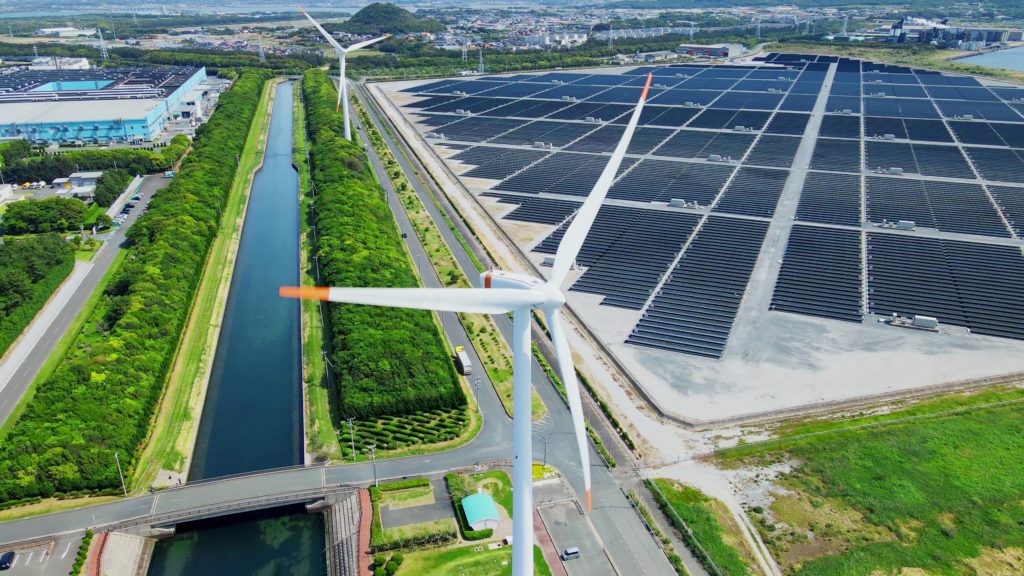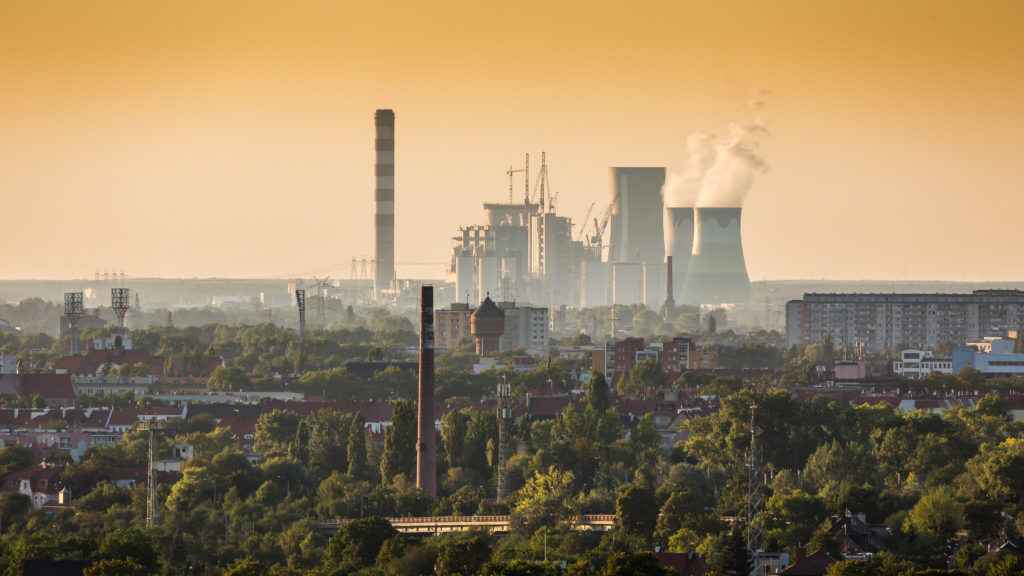
If you’re reading this article, you likely strive to live a sustainable lifestyle. However, some greenhouse gas emissions are inevitable—even everyday activities like commuting to your office or buying groceries can increase your carbon footprint.
If incurring emissions is part and parcel of living in today’s world, what can environmentalists do to reduce the impact of their implicit greenhouse gas (GHG) production?
One option is investing in carbon credits. Whether you’re a climate action newcomer or a long-time environmentalist, carbon credit technology can help to revolutionize your eco-friendly lifestyle.
In this guide, we’ll teach you how to invest in carbon credits, explore a few different types of carbon credit projects, and detail three investment methods you can adopt.
What Are Carbon Credits?
Before we explore how to invest in carbon credits, let’s quickly refresh ourselves on what they actually are.
Essentially, a carbon credit is a certificate in the voluntary carbon market guaranteeing that your credit helps offset a specific volume of emissions.
What does this look like in real life? Let’s explore an example:
- You have to fly to visit a relative next month, so you purchase an airline ticket.
- You use an emissions calculator to determine that your flight will produce 200 kilograms (kg) of carbon dioxide to get you to your destination and back home again.
- To help offset your emissions from the trip, you purchase a carbon offset credit to neutralize 200 kg of carbon dioxide. For example, you could purchase a credit that will allow a carbon capture project to reclaim 200 kg of carbon dioxide from the atmosphere. We’ll discuss the different types of carbon credit projects in the next section.
A carbon credit purchase foots the bill for climate action activities that stand to neutralize the emissions you’ll produce on your trip.
Plans to reduce emissions have made progress in the European Union, United States, the United Kingdom, New Zealand, and China. The European Union plans to have net-zero carbon emissions by 2050, as part of the European Green Deal, and US President Biden signed an executive order in 2021 pledging net-zero emissions in the US by 2050 as well.
There are currently 65 carbon pricing initiatives according to the World Bank, and they covered more than a fifth of the world’s greenhouse gas emissions in 2021, and that’s in addition to the voluntary carbon market where businesses can purchase carbon offsets
Refinitiv estimates that in 2021, the global carbon market was worth $851 billion, up from just $270 billion in 2020.

Different Types of Carbon Credit Projects
Carbon credits come in all shapes and sizes, and different environmentalist projects tackle different climate action tasks. Let’s explore a few common project types you might fund when you purchase carbon credits.
Renewable Energy
Renewable energy carbon credit projects use your credit purchases to advance renewable energy in some fashion. Some examples of a renewable energy carbon offset project include:
- Renewable technologies research
- Renewable energy production
- Fossil fuel bypassing in industrializing nations
- Renewable infrastructure-building
- Advocacy and lobbying
One example of a renewable energy carbon project is Atmosfair, a Germany-based initiative focusing specifically on air travel mitigation. Some of their projects include:
- Environmental education initiatives
- Supplying industrializing nations with renewables infrastructure, such as
- Solar power
- Wind power
- Biofuel and biomass energies
- Decarbonization of tourism efforts
- Consulting with businesses to build decarbonization plans
Importantly, investors in renewable energy projects should consider how tangible the results of their purchase will be. Investors should seek projects that are transparent about the past results of their projects, their goals going forward, and the impact of carbon credit purchases at large.
Conservation
Conservation projects are a broad category, but some examples of carbon offset credit conservation projects include:
- Stewardship or conservation of forest land
- Protection and advocacy for Indigenous communities
- Pollution prevention or mitigation initiatives
- Large-scale tree planting projects
- Subsidization of permaculture farming and food forests
Conservation projects generally fulfill one of two purposes:
- Capturing or mitigating emissions or pollution
- Bolstering communities that steward their local ecosystems without fossil fuels
Since it’s such a wide-reaching project type, there are a variety of organizations that carbon credit investors can support within this sector. Some examples include:
- Rainforest Trust – Rainforest Trust uses carbon credits and other donated funds to protect rainforests (which absorb and store carbon dioxide emissions), native wildlife, and Indigenous communities.
- Cool Earth – Cool Earth specifically supports Indigenous communities living in and protecting rainforest ecosystems. With the understanding that native peoples actively living in rainforests know best how to care for them, the organization seeks to protect Indigenous peoples from marginalization and displacement.
- ReforestAction – ReforestAction is a reforesting organization that plants trees worldwide. But, they don’t just focus on forests’ ability to capture carbon—they also promote biodiversity protection and rehabilitation, advocate for policies that protect forest land, and provide critical tree planting work to Indigenous communities.
Emissions Capture
Emissions capturing projects usually take one of three major forms:
- Carbon dioxide capturing (often through reforestation, which Aspiration facilitates through our products)
- Methane capture
- Landfill gas capture
All three constitute greenhouse gas (GHG) emissions, but in the cases of methane and landfill gasses, organizations often take steps to convert these GHG emissions into usable energy.
Two emissions capture projects include:
- Terrapass – Terrapass uses carbon credits to fund four major initiatives—landfill gas capture, renewable energy projects, forest protection and tree planting, and industrial gas destruction.
- 1t.org – 1t.org primarily mobilizes worldwide, large-scale tree planting. But, they also organize collective climate action efforts and help scale successful climate technologies and systems.
Tree planting is a critical arm of carbon-capturing worldwide. Some sustainable financial services providers are leading the charge, combining everyday transactions and money management with carbon credit investing to facilitate large-scale tree planting. Aspiration’s green credit card and eco-friendly debit card, for instance, provide consumers with emissions capture opportunities every time they use their card.
Community Projects
From a climate finance perspective, consumers are an anchor that determines whether or not green development succeeds. Consumers seeking to help offset their footprints can invest in carbon offsets that support small community projects in their own backyards and beyond.
What does community project investment look like? Let’s explore a few examples of projects you might encounter in your search:
- Local farms that produce food while:
- Capturing their emissions with sustainable tech or tree planting
- Using renewables or alternative fuels to power their machinery
- Advocating for or building green food systems
- Individual investors or innovators building sustainable tech
- Small businesses seeking to decarbonize
- Local pollution mitigation efforts
- Communities abroad seeking to avoid fossil fuel reliance as they industrialize
So, where do you find such carbon offset projects? Luckily, numerous online aggregators of sustainable community projects make it easy to lend or donate to peers taking climate action. One example is Kiva, which connects peer-to-peer lenders, donors, and investors with green entrepreneurs around the world.

3 Methods for Investing in Carbon Credits
We’ve explored why you may want to invest in carbon credits and the kinds of projects your investments could fund. Now, let’s cover how to invest in carbon credits once you’ve committed to helping offset your footprint.
#1 Direct Peer-to-Peer Lending and Donating
Directly giving money to a project, organization, or initiative that resonates with you is one tactic that consumers can adopt to help offset their carbon emissions. This route can take a few different forms:
- You could use a platform like Kiva to find a project and directly contribute to it using the site’s infrastructure.
- You could identify a local project in your area and organize a digital transfer or cash exchange.
- You could seek a local green investment firm in your area that could connect you with local sustainable projects to support.
One important factor to consider when directly contributing to an initiative is how your footprint translates to a dollar amount. Your project of choice may be able to calculate the volume of emissions they can offset per dollar, but this might not always be the case.
Keep in mind that even if your contribution doesn’t lead to direct emissions capture, policy change, or renewables development immediately, any positive changes as a result of your investment will make an impact.
#2 Manage Money with a Green Financial Services Provider
Green financial services providers, like Aspiration, are making it easier than ever to invest in carbon offset credits with limited legwork. Aspiration undertakes carbon offsetting efforts for you, automatically investing in projects that can neutralize your everyday footprint.
We accomplish this task in a few key ways:
- When you use the Aspiration credit card, we plant one tree for every purchase you make, and you can plant a second tree with your spare change by rounding up your purchase to the nearest dollar. That way, if you use the card once a day, you could plant enough trees to counteract your daily negative carbon footprint (unless you’re a real gas-guzzler).
- When you sign up for Aspiration Plus, we’ll automatically help offset the carbon dioxide emitted from every gallon of gas you purchase.
- Non-account holders can link their existing credit or debit cards to plant a tree each time they make a purchase via our Plant Your Change program.
With a green money management partner like Aspiration, you can help offset emissions with everyday purchases.
#3 Purchase Credits from Third Parties
Numerous third parties offer carbon credits for one-time or regular purchases and use your funds to bolster their own projects or redirect them to other initiatives. One example—which we discussed briefly above—is Terrapass.
Terrapass operates their own sustainable projects worldwide, but they make it simple to calculate your footprint, purchase one-time credits when you need to, or sign up for recurring investments in their initiatives.
But, remember to vet the third parties you use for carbon credit investing—make sure their projects are:
- Producing results
- Recognized by regulatory agencies or other sustainability organizations
- Transparent about their funding, their plans, and their ethics
Manage Your Money While Helping Offset Your Emissions
Investing in carbon offset credits is an excellent method for helping address your carbon footprint—whether you’re combating your everyday, inevitable emissions or neutralizing the impact of a major emissions event like an airplane ride.
Aspiration is making it easier than ever to manage your money while helping offset your GHG emissions.
But, we’re so much more than a green financial services provider—we use your hard-earned savings to invest in projects that benefit the planet and produce profitable returns, bolster the green economy by operating the Redwood Fund, and help you neutralize the emissions that you produce in your everyday life.
We’ve planted almost 76 million trees since our inception, and we’re not slowing down anytime soon; we’ve publicly committed to planting 1 billion trees by 2030. When you’re ready to take action against climate change, start managing your finances with Aspiration.
Sources:
Corporate Finance Institute. Carbon Credit. https://corporatefinanceinstitute.com/resources/knowledge/other/carbon-credit/
International Civil Aviation Organization. ICAO Carbon Emissions Calculator. https://www.icao.int/environmental-protection/Carbonoffset/Pages/default.aspx
Energy Intelligence Centre. 4 Types of Carbon Offset Projects. https://www.eic.co.uk/4-types-of-carbon-offset-projects/
The World Bank. Carbon Pricing Dashboard | Up-to-date overview of carbon pricing initiatives https://carbonpricingdashboard.worldbank.org/map_data
Reuters. Global carbon markets value surged to record $851 bln last year-Refinitiv https://www.reuters.com/business/energy/global-carbon-markets-value-surged-record-851-bln-last-year-refinitiv-2022-01-31/


